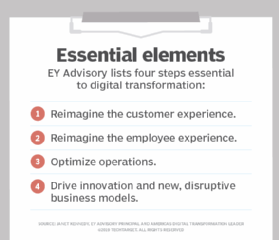
How to improve candidate matching with AI in HR recruitment
AI in HR recruitment can source talent externally but can also be used to improve internal projects. AI platforms can match qualified existing employees to potential open projects.
Companies have long been using AI in HR recruitment to screen employees from a large pool of applications. With a shortage of talent, sourcing and acquiring new employees are helpful, but how can you use AI to upskill or match existing employees to new projects?
Amy DeCastro, vice president of HR for the secure power business at Schneider Electric, a multinational energy management and automation company, shares her take on using AI platforms to match the skills and interests of existing employees to new projects. She recruits from within her own company -- having employees enter profiles on an AI database that then matches them with potential projects, teams and jobs.
Editor's note: This interview has been edited for clarity and length.
How can companies use AI in HR recruitment internally?
 Amy DeCastro
Amy DeCastro
Amy DeCastro: We have a pilot right now in HR with a company called Gloat. They use AI to match candidates with certain projects within an organization. We have 140,000 employees globally, and matching them with the right project or opportunity [can be tough].
We'll say, 'I need a finance person that has this experience.' Now, we know we have them internally but have no idea how to find them. Gloat has created a platform where our employees can upload their LinkedIn profile, their resume and what their interests are -- and then, on a regular basis, they can look at open opportunities. Based on the preferences that they're saying they like, as soon as opportunities by managers are loaded in the system, AI matches that with the skills that are in the system. [Employees] are not wasting time searching through open positions or job databases and are becoming more efficient because they spent a little bit of time in an [AI] system.

If I take another angle on this -- having supported an IT organization specifically around help desk -- the skill sets that we need are actually changing a bit. You used to talk on the phone; now, you're chatting. [Employers] don't need the person on the phone for level one questions but actually do need someone on the technical side to make sure that the chat feature is always up and running. [With Gloat], I now don't need to bring a level one person in, where they sit on the phone and they talk about things that they could do in their sleep. With AI, we're not necessarily displacing, but changing the skill sets that are going to be needed.
However, this particular organization has only developed their solution in English, which has been a hiccup for us. As we wanted to use AI, we've kept bumping up against a language barrier. The usage of particular words or the way things have been translated could potentially cause an issue or false matches because of the way someone has positioned one skill or another.







